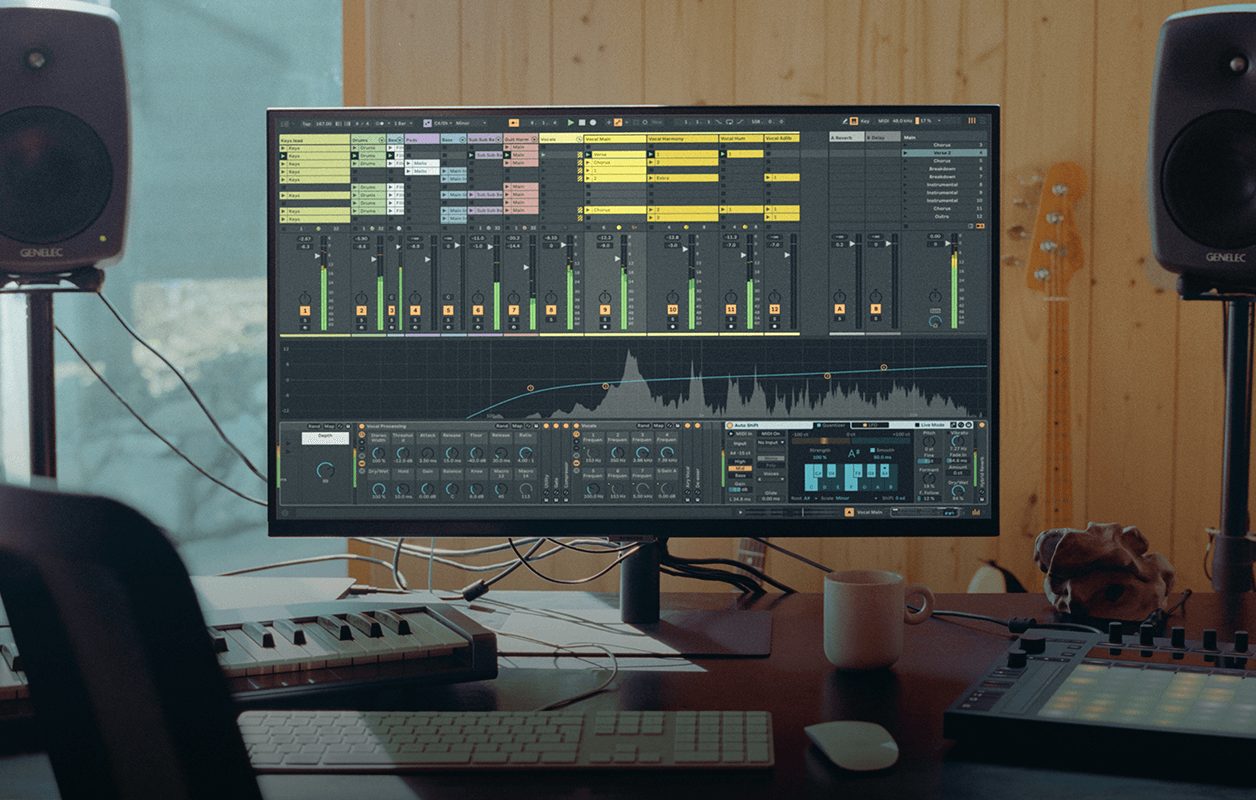
Ableton Live 12 has been out for a couple of months now, with Ableton releasing consistent updates and improvements since its official launch on March 5th, 2024. Upgrades for Standard and Suite editions cost $159 and $229, with new licenses priced at $439 and $749, respectively.
Are you unsure if you’re ready to upgrade from Ableton Live 11, a different DAW, or other software versions? In this guide, we’ll break down the essential new features of Ableton Live 12 so that you can make the best buying decision for your needs.
What version of Ableton Live 12 should I get?
Like prior versions, Ableton Live 12 comes at three different tiers, each with varying capabilities:
- Intro: This bare-bones version of the software provides a maximum of 16 audio and MIDI tracks and 5GBs worth of native sounds, plus eight instruments. It’s designed for beginners or those who don’t need larger track functionality.
- Standard: Ableton Live Standard edition provides unlimited audio and MIDI tracks and 38GBs of included sounds plus 13 instruments.
- Suite: Ableton Live Suite includes all of Standard edition’s functionality, with additional bells and whistles. This version includes 20 instruments and 71GBs of sounds.
Existing Ableton Live users receive a discount when updating to the Live 12 Suite. Your upgrade cost may vary depending on your current version of Ableton Live.
5 Best New Features of Ableton Live 12
Here are the major features of Ableton Live 12 to factor into consideration:
Major MIDI Updates
Perhaps the biggest draw to Ableton Live 12 is the DAW’s expansion of MIDI features. Ableton 12 introduces MIDI generators, allowing you to use constraints around key, scale, and other parameters to create MIDI sequences out of thin air. You can build chords, rhythms, and melodies independently to craft a unique sequence for every instrument:
Ableton’s broader MIDI controls have also improved, allowing you to experiment with articulation, draw acceleration curves, and simulate certain playing textures, such as the pluck or strum of a guitar.
Key and Scale Controls
Live 12 brings a new ‘Tunings’ tab, allowing you to stay in key across instruments and devices. This feature lets you sync MIDI clips and devices to any key or scale. You can also pair this feature with the novel MIDI generator to build out melodies and chord progressions within your key of choice.
Meld
Ableton Live 12 introduces a new instrument with Meld, a new MPE-enabled synthesizer. This powerful synth offers subtractive, FM, and granular synthesis methods, making it easy to create textured, playful sounds. Meld has an impressive modulation matrix and two independent oscillators, letting you fully immerse yourself in the instrument.
Roar
Roar is Ableton Live 12’s new native color and saturation plugin, adding subtle or intense distortion with the turn of a knob. The plugin is separated by three stages for saturation, letting you process across serial, parallel, and mid-side configurations. Roar has a built-in compressor and feedback loops, allowing you to create some wild sounds with this mighty, new native plugin.
Display Improvements
Ableton’s update comes with a major UI update, providing a more modular window experience. The mixer is now available in ‘Arrangement’ view whereas it was previously only accessible via the ‘Session’ view.
The display allows you to resize windows and features into view to taste. For instance, you can view the piano roll and mixer simultaneously while in Session view. Ableton now has a sound tagging feature and an automated sound similarity search so that you can track down ideal samples with a couple of clicks.
Perhaps the most subjective and anecdotal improvement notes by Ableton Live 12 users is that the software has enhanced software stability in comparison to Live 11. In particular, users with Apple Computers containing an M1 processor are finding that Live 12 has much less of a risk of crashing when loaded with plugins in comparison to prior versions.
We hope this guide makes it easier for you to weigh your options and determine whether Ableton Live 12 is a worthy upgrade for your needs. Happy producing!

